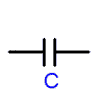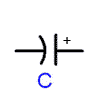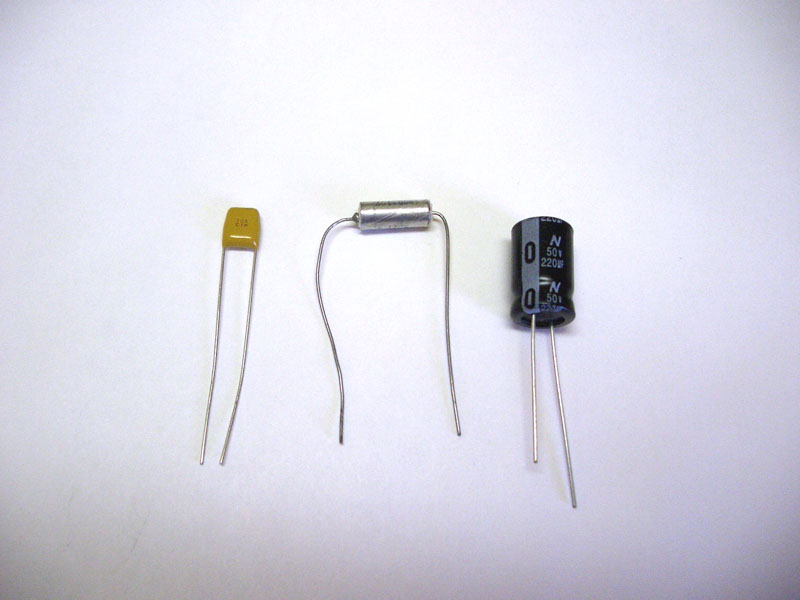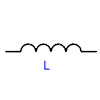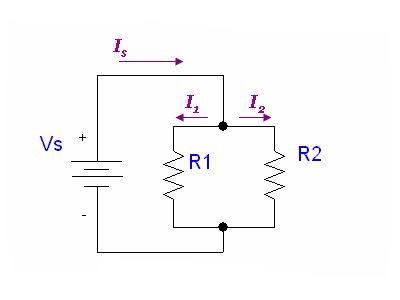Resistors (Ohm's Law), Capacitors, and Inductors
Resistors
Try wikipedia for more on resistors and for the resistor color codes.
The relationship between the current through a conductor with resistance and the voltage across the same conductor is described by Ohm's law:
where V is the voltage across the conductor, I is the current through the conductor, and R is the resistance of the conductor.
The power dissipated by the resistor is equal to the voltage multiplied by the current:
If I is measured in amps and V in volts, then the power P is in watts.
By plugging in different forms of V=IR, we can rewrite P=IV as:
or
Capacitors
The symbol for a capacitor:
The capacitor on the right is polarized. The potential on the straight side (with the plus sign) should always be higher than the potential on the curved side.
###PUT PICTURE OF CAPACITORS HERE###
A capacitor is a device that stores electric charges. The current through a capacitor can be changed instantly, but it takes time to change the voltage across a capacitor.
The unit of measurement for the capacitance of a capacitor is the farad, which is equal to 1 coulomb per volt.
The charge(q), voltage (v), and capacitance(C) of a capacitor are related as follows:
where q(t) and v(t) are the values for charge and voltage, expressed as a function of time.
Differentiating both sides with respect to time gives:
Rearranging and then integrating with respect to time give:
If we assume that the charge, voltage, and current of the capacitor are zero at , our equation reduces to:
The energy stored in a capacitor (in joules) is given by the equation:
Inductors
The symbol for an inductor:
An inductor stores energy in the form of a magnetic field, usually by means of a coil of wire. An inductor resists change in the current flowing through it. The voltage across an inductor can be changed instantly, but an inductor will resist a change in current.
Devices with coils of wire, such as motors or transformers, add inductance to a circuit. However, we generally don't purposefully add inductors to circuits.
The relationship between the voltage across the inductor is linearly related by a factor L, the inductance, to the time rate of change of the current through the inductor. The unit for inductance is the henry, and is equal to a volt-second per ampere.
The relationship between the voltage and the current is as follows:
If we multiply both sides by dt, we get:
Integrating both sides from to gives:
which is equal to:
assuming that the voltage, current and energy of the inductor are all zero at reduces the equation to
The energy stored in the inductor is given by:
Elements in Series and Parallel
Resistors connected in series and parallel:
| Resistor | Capacitor | Inductor | |
|---|---|---|---|
| Series | |||
| Parallel |
|
More than 2 Elements in series or parallel
Here we provide the equations for calculating the equivalant resistance of three or more resistors in parallel; the same form can be applied to the corresponding equations for capacitors and inductors. Of course, you can always just simplify a network of elements by combining two at a time using the equations above.
To find the combined resistance of resistors connected in series, simply add the resistances:
If the resistors are connected in parallel, the equation is:
Proof for Resistors in Parallel equation
Here we provide the derivation for the parallel resistors equation. The corresponding equations for capacitors and inductors can be derived with a similar method.
We can prove the equation for parallel resistors by using Kirchhoff's voltage and current laws:
(KVL)
(KCL)
Plugging in the constitutive law for resistors in the second equation yields:
References
Hayt, William H. Jr., Jack E. Kemmerly, and Steven M. Durbin. Engineering Circuit Analysis. 6th ed. New York:McGraw-Hill, 2002.






